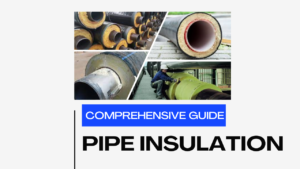Floating Ball Valve: Conquer 10 Crucial Questions
Understanding different valve types is fundamental in piping engineering. The floating ball valve is a widely used component in various industries, known for its simple yet effective design. This valve utilizes a spherical closure element that is not rigidly fixed, allowing it to move slightly within the valve body. This unique “floating” characteristic is key to its operation and sealing capabilities. As fluid pressure builds, the ball shifts, enhancing the seal against the downstream seat. This article delves into the mechanics and applications of the floating ball valve, testing your knowledge with challenging questions.
Table of Contents
👉 Check Course on Piping Engineering
Test Your Knowledge: 10 Essential MCQs
Note: Timestamps for the MCQs could not be provided as they were not present in the source transcript excerpts.
1. What is the primary reason a ball valve is referred to as “floating” in the context of a floating ball valve?
2. In a floating ball valve, what components hold the ball in place and create a seal?
3. How does fluid pressure contribute to the sealing mechanism in a floating ball valve?
4. What material are the seats in a floating ball valve typically made of?
5. What distinguishes a floating ball valve’s shutoff capability regarding flow direction?
6. How much rotation of the handle or gear is typically required to change the state of a floating ball valve from fully open to fully closed?
7. What happens to the ball’s position relative to the seats when the valve is in the open position?
8. What is a significant operational limitation of floating ball valves, particularly under certain conditions?
9. Based on the source, for what pipe size range are floating ball valves considered ideal?
10. In which of the following applications are floating ball valves commonly used?
👉 Browse EPCLAND Courses
Major Takeaways
- A floating ball valve features a ball that can move slightly within the valve body.
- The ball sits tightly between two soft seats, which help keep it centered.
- Fluid pressure pushes the floating ball valve ball more tightly against the downstream seat, improving the seal.
- This valve type offers bidirectional shutoff, stopping flow from either direction.
- Operating a floating ball valve can become difficult under very high pressure.
- Floating ball valves are suitable for small to medium pipe sizes and diverse applications.
Conclusion:
In summary, the floating ball valve is a crucial and common component in piping systems. Its design, which allows the ball to “float” and use line pressure for sealing, makes it effective for various applications and provides bidirectional shutoff. While simple and widely used, it’s important to consider its limitation regarding operation at very high pressures. Mastering the principles of the floating ball valve is essential for anyone in the piping industry.
👉 Visit Quiz Blog Collection



